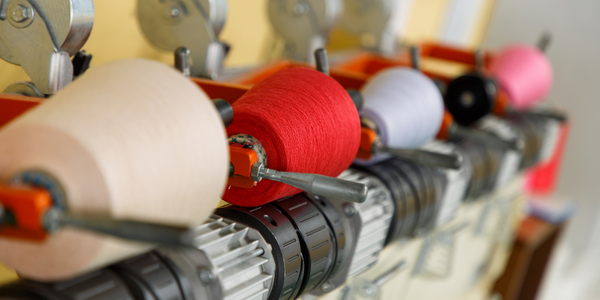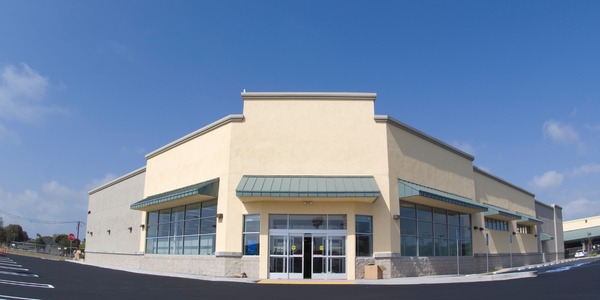公司规模
Mid-size Company
地区
- America
国家
- United States
产品
- DocuWare
- Kodak i1320
- Kodak i1440
技术栈
- EDI transmissions
- AS/400 based ERP system
实施规模
- Enterprise-wide Deployment
影响指标
- Productivity Improvements
- Cost Savings
- Customer Satisfaction
技术
- 应用基础设施与中间件 - 数据交换与集成
- 功能应用 - 企业资源规划系统 (ERP)
适用行业
- 服装
适用功能
- 销售与市场营销
用例
- 库存管理
- 供应链可见性(SCV)
服务
- 系统集成
- 软件设计与工程服务
关于客户
Jaya Apparel Group 是一家服装设计和制造商,为沃尔玛、Saks 5 Avenue 等高端精品店和大型百货公司设计服装。作为时尚界的中型企业,该公司拥有 200 名设计师、销售代表和客户服务代理,主要在洛杉矶工作,并在纽约设有一个较小的卫星办公室。该公司签订合同,在中国、韩国和越南生产这些商品。Jaya Apparel Group 的大型百货公司客户使用电子数据交换或 EDI 传输来下订单和修改订单。该公司能够以电子方式处理订单,但除了将信息打印出来并归档到银行柜子中之外,没有其他方式来存储和管理信息。
挑战
Jaya Apparel Group 是一家为高端精品店和大型百货公司设计并制造服装的公司,它面临着多项挑战。该公司能够以电子方式处理订单,但除了将信息打印出来并归档到银行文件箱中之外,没有其他方式来存储和管理信息。这种纸质流程意味着,客户采购订单、提货单、提货单、发票、装运清单等文件中包含的重要信息难以检索。调查应收付款差异是一个复杂的过程,通常非常繁琐,以至于公司无法反驳客户索赔。该公司需要一个电子文档管理系统来改进其工作流程,通过多步骤流程传送文档,而无需使用电子邮件。该解决方案需要与其基于 AS/400 的 ERP 系统集成,并能够自动索引和归档 EDI 传输,以及作为将要扫描和导入的手写文档的存档。
解决方案
在评估了多个系统后,公司实施了 DocuWare 以及两台扫描仪,即 Kodak i1320 和 i1440。公司现有的 Toshiba 和 Xerox MFP 也成为解决方案的一部分。公司检查了纸质工作流程,并创建了数字流程。Jaya Apparel Group 与其授权 DocuWare 合作伙伴合作开展内部调查,以确定捕获纸质和数字文档以及电子邮件的机会,并使公司转向更高效的业务流程。如今,EDI 信息会自动编入索引并存储在 DocuWare 中。他们 800 家精品店客户的客户采购单等手写信息被手动编入索引,作为下订单的永久记录。客户服务部门和会计部门几乎可以即时访问订单信息,从而抵消了手动编入索引所花费的时间。Jaya Apparel Group 将两年的客户订单的扫描和编入索引外包出去,以解决他们可能仍在追讨的未结短付款索赔。
运营影响
数量效益

Case Study missing?
Start adding your own!
Register with your work email and create a new case study profile for your business.
相关案例.

Case Study
Fire Alarm System and Remote Monitoring Sytem
Fire alarm systems are essential in providing an early warning in the event of fire. They help to save lives and protect property whilst also fulfilling the needs of insurance companies and government departments.Fire alarm systems typically consist of several inter-linked components, such as smoke detectors, heat detector, carbon monoxide, manual call points, sounders, alarm and buzzer. The fire alarm system should give immediate information in order to prevent the fire spread and protect live and property.To get maximum protection a shoe manufacturer in Indonesia opted for a new fire alarm system to monitor 13 production sites spread over 160 hectars. Although the company had an existing fire alarm system, it could not be monitored remotely.It was essential that the new system would be able to be monitored from a central control room. It needed to be able to connect to the existing smoke detector and manual call point. Information should be easily collected and passed on to the Supervisory Control and Data Acquisition (SCADA) system. Furthermore, the system should have several features such as alarm management, auto reporting, being connected to many client computers without additional cost, and run 24/7 without fails. The company also needed a system which could be implemented without changing the architecture of the existing fire alarm system.

Case Study
IoT Applications and Upgrades in Textile Plant
At any given time, the textile company’s manufacturing facility has up to 2,000 textile carts in use. These carts are pushed from room to room, carrying materials or semi-finished products. Previously, a paper with a hand-written description was attached to each cart. This traditional method of processing made product tracking extremely difficult. Additionally, making sure that every cart of materials or semi-finished products went to its correct processing work station was also a problem. Therefore, the company desired an intelligent solution for tracking assets at their factories. They also wanted a solution that would help them collect process data so they could improve their manufacturing efficiency.

Case Study
Retailer Uses RFID Scanner to Improve Efficiency
Patrizia Pepe wished to improve the logistics of their warehouse: accepting incoming goods from their production sites, movement of items throughout
the warehouse, and packaging of goods for distribution to the retail locations. They initially tried to use barcodes for this function. Because barcodes must be individually scanned within a line-of-sight, the acceptance of goods coming into the warehouse was too time consuming. Working with the University of Florence, Patrizia Pepe instituted a five-month pilot project beginning in August of 2009 to test the validity of an RFID solution. The pilot involved tagging of about 60,000 items for the second seasonal collection, and convinced the company to move forward with tagging all items.

Case Study
Monitoring and Controlling Automatic Mixing and Dispensing Machines
As technology advances, textile manufacturing has been transformed from a labor-intensive to a partially or fully automated industry. Automation is significant in all segments of textile production - from spinning to printing, and textile machinery manufacturers are constantly searching for new technologies and automation processes will increase the productivity of their machines. The color paste mixing and dispensing machine is an essential part of the printing and dyeing process. With the advantage of automatically computerized controls and database management, the system can significantly improve its dispensing precision, working efficiency and production quality as well as reducing material consumption.









